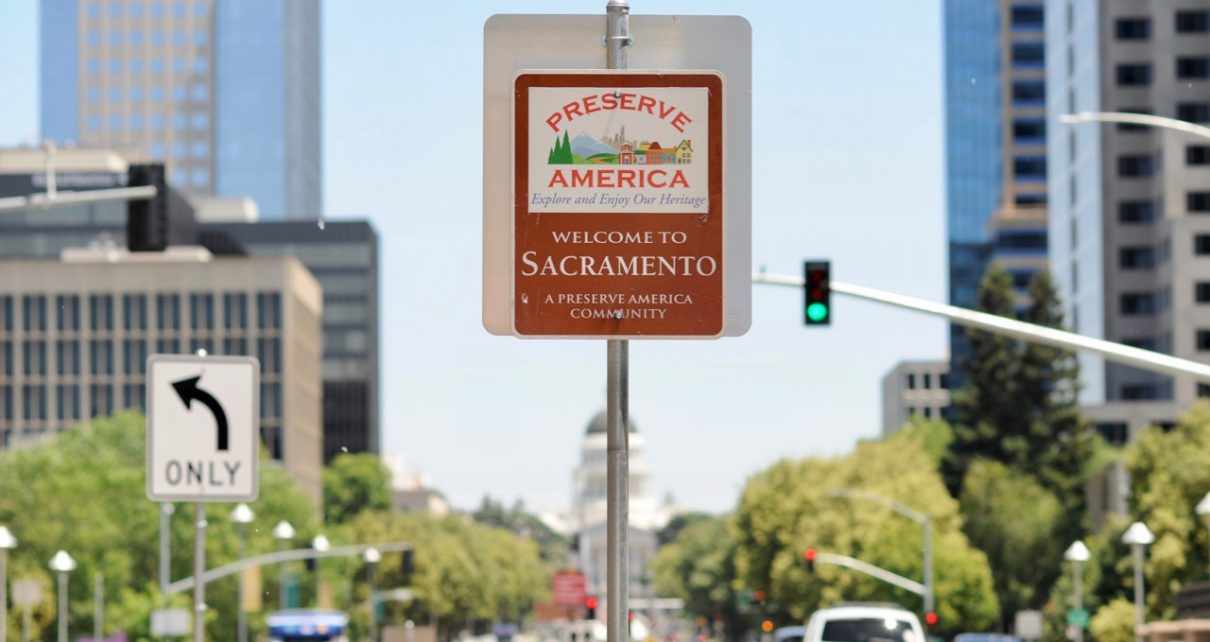
Capitol Mall Sign. (Photo: Kevin Sanders for California Globe)
General Guidance in Reading the California Vehicle Code
Contains statutes relating to the operation, ownership and registration of vehicles in California
By Chris Micheli, July 5, 2022 6:19 am
California’s statutes are contained in 29 separate codes. The twenty-seventh alphabetically is the Vehicle Code. All 29 Codes have general provisions applicable to reading and interpreting that Code’s sections. The following are selected general provisions of the Vehicle Code:
Section 1 – This Act is known as the Vehicle Code.
Section 2 – The provisions of this Code, insofar as they are substantially the same as existing provisions relating to the same subject matter, are to be construed as restatements and continuations and not as new enactments.
Section 5 – If any portion of this Code is held unconstitutional, the decision does not affect the validity of any other portion of this Code.
Section 6 – Unless the provision or the context otherwise requires, these general provisions and rules of construction govern the construction of this Code.
Section 7 – Division, chapter, and article headings do not in any manner affect the scope, meaning, or intent of the provisions of this Code.
Section 8 – Whenever, by the provisions of this Code, a power is granted to a public officer or a duty imposed upon an officer, the power may be exercised or the duty performed by a deputy of the officer or by a person authorized pursuant to law by the officer.
Section 9 – Whenever any notice, report, statement, or record is required by this Code, it must be made in writing in the English language.
Section 10 – Whenever any reference is made to any portion of this Code or of any other law, the reference applies to all amendments and additions made.
Section 12 – The present tense includes the past and future tenses; and the future tense includes the present.
Section 12.2 – The term “spouse” includes “registered domestic partner.”
Section 13 – The masculine gender includes the feminine and neuter.
Section 14 – The singular number includes the plural, and the plural the singular.
Section 15 – The term “shall” is mandatory and “may” is permissive.
Section 16 – The term “oath” includes affirmation.
Section 19 – Whenever the acknowledgement of any document is required by this Code or any regulation of either department, the signature of the applicant attested to in his presence by the signature of a subscribing witness is sufficient.
Section 21 – Except as otherwise expressly provided, the provisions of this Code are applicable and uniform throughout the state and in all counties and municipalities, and a local authority must not enact or enforce any ordinance or resolution on the matters covered by this Code, including ordinances or resolutions that establish regulations or procedures for, or assess a fine, penalty, assessment, or fee for a violation of, matters covered by this Code, unless expressly authorized by this Code.
Section 22 – Whenever notice is required to be given under this Code by a department or any division, officer, employee, or agent, the notice must be given either by personal delivery to the person to be notified, by certified mail, return receipt requested, or by mailing the notice, postage prepaid, addressed to the person at his or her address as shown by the records of the department.
Section 23 – The giving of notice by personal delivery is complete upon delivery of a copy of the notice to the person to be notified. The giving of notice by mail is complete upon the expiration of four days after deposit of the notice in the mail, except that in the case of a notice informing any person of an offense against him under Section 40001, the notice is complete 10 days after mailing.
Section 30 – It is declared as a matter of legislative policy that red lights and sirens on vehicles should be restricted to authorized emergency vehicles engaged in police, fire and lifesaving services; and that other types of vehicles which are engaged in activities which create special hazards upon the highways should be equipped with flashing amber warning lamps.
Section 31 – No person can give, either orally or in writing, information to a peace officer while in the performance of his duties under the provisions of this Code when such person knows that the information is false.
- Child Support Obligations - December 12, 2025
- Quiet Title Civil Actions - December 11, 2025
- Education and Certification of Vessel Operators - December 11, 2025





One thought on “General Guidance in Reading the California Vehicle Code”